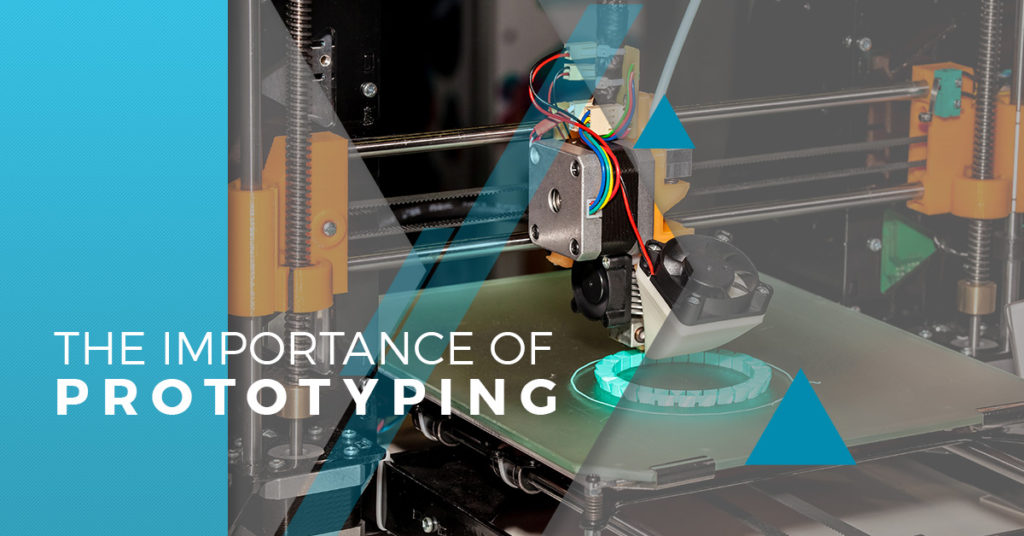
The Importance Of Prototyping
Whatever the item or product someone intends to produce, creating a prototype is essential to the designing process. Prototypes help create a close representation of the real functionality of a product. And while sketches, blueprints, wireframes, and mockups are great visuals, a prototype is something that is going to bring a product to life, something that you, investors, and future customers will want to touch, feel, and use for a realistic experience.
You likely already know that prototyping is a part of manufacturing, you may even know how to go about doing it or how to make the most of it. However, some may not be sure or fully understand how important a prototype is. Sure, skipping a prototype may save someone time and money, but they will likely end up spending even more during development. In this article, we’ll quickly review what exactly a prototype is and why it is important and should not be skipped by inventors and companies in various industries.
What Is A Prototype?
Really quickly, in case you are someone who is not already aware of what prototyping is; prototyping is creating a preliminary model of a product you wish to create. Essentially, it is a quick model explaining the actual plans for a final product. This initial model can vary in accuracy. You may have a model which prototypes the function of your product but looks nothing like it is supposed to. You may also prototype the design, but it could be completely non-functioning. Additionally, you could even have a mixture of the two. While there are many kinds of prototype designs and each prototype is made at different stages in the product design life cycle, with each one you get closer and closer to the final design of the product!
The Importance Of Prototyping
As mentioned, prototyping is the act of building a preliminary model of an idea product to ensure that everything about it is as you expect it to be. Of course, there are additional reasons why prototyping is so important, including:
- Evaluating and Testing Product Design. Unfortunately, ideas, sketches, and drawings of a design can sometimes be a far cry from the real world in which the product will be used. By having a prototype of a product designed, it is possible to physically sit down with a model that represents the real functionality of a product and determine whether or not certain aspects are worthwhile, need revising, or need to be discarded.
- Analyze Production Costs and Issues. By having a prototype created before beginning production, it is possible to get an idea of what the production process looks like, as well if any steps can be changed, enhanced, or removed. Prototype design not only streamlines production, but it can help keep actual production costs to a minimum. Afterward, if there are any difficulties in production or perhaps processes that can create problems for the end product, it is much better to see these before production starts than after.
- Selling The Product To Others. Similar to how it is much easier to identify any issues with a design by holding an actual functional model, it is also easier to sell the product to potential customers when they are able to have a model to hold and manipulate. Without one, the product is nothing but a concept. However, with a prototype in hand, that concept becomes a reality and makes it far less complex to sign a purchase order. During the prototype phase, the targeted customer should be considered. Consumers have expectations and specifications that often are overlooked by designers and testers. If the end consumer doesn’t like it, they won’t buy it, which is why focus groups and external testing with prototypes should be addressed before the production stage begins.
- Patents. Certain products that are new or unique enough may require a patent. It’s no use to design and produce a great product only to have a competing company start manufacturing a product that is significantly similar due to the original company’s failure to patent some of the key aspects of the design. By having a functional and working prototype, it is much easier to sit down with a patent attorney and see what design aspects may be patentable. Oppositely, it is possible to see what parts of the prototype and design violate patents of other individuals and how they can be changed before production, and possibly filing a lawsuit, begins.
As you can see, prototypes have a significant role in the production of an item or product and should not be skipped on. Prototyping enables those with an idea or product to evaluate and test a design, analyze production costs, sell the product, and secure patents.
If you are interested in getting a prototype for your design, Glober Design is one of the best prototype manufacturing companies around! To learn more about the kinds of prototypes we can help you with, contact us!
